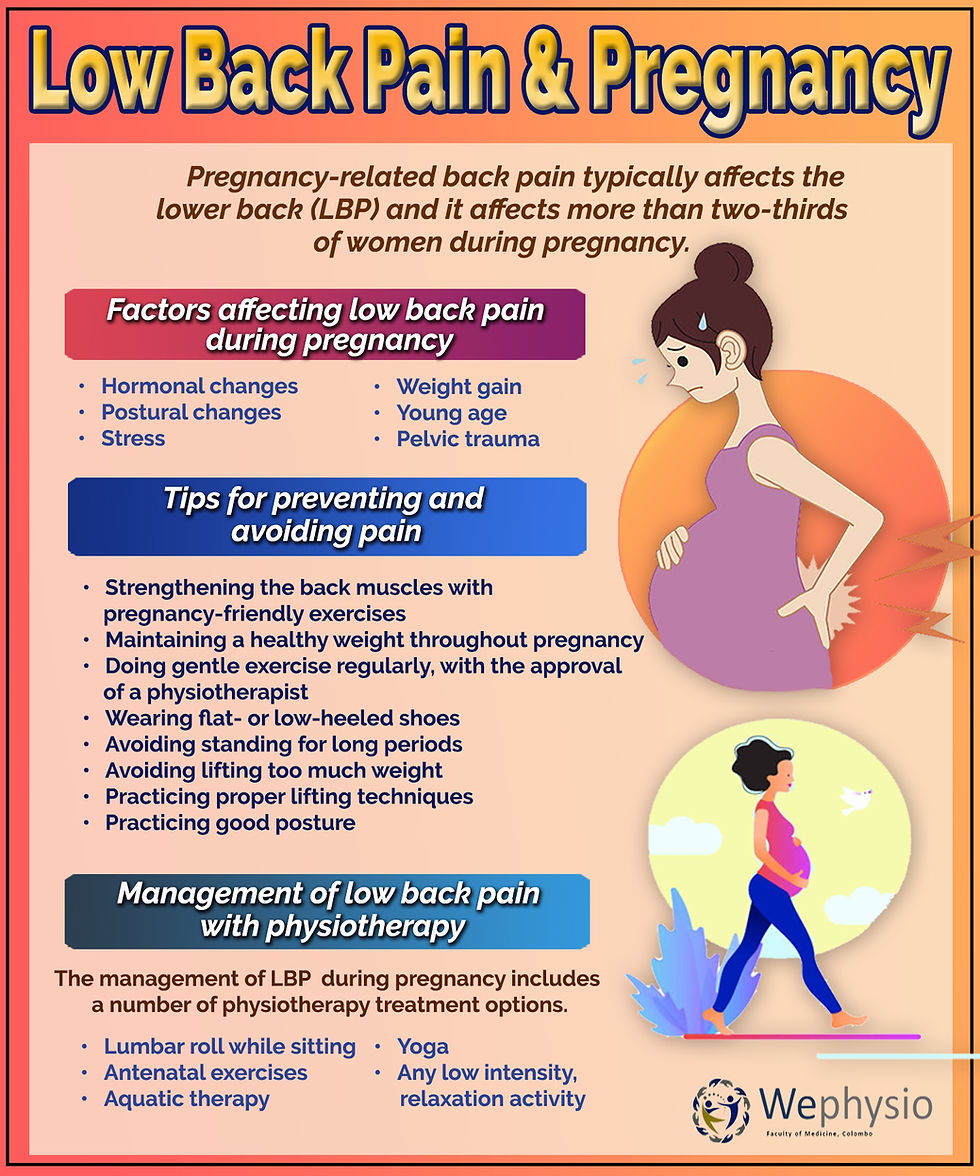Low back pain & pregnancy.
- Vimukthi Chandula
- Oct 27, 2021
- 2 min read
Around 45% and 75% of pregnant women are said to experience low back pain (LBP) at some point during their pregnancy. This type of LBP can be present in the pelvic girdle, between the posterior iliac crest, gluteal fold and/or in the general lumbar spine region. It is thought to occur due to hormonal, circulatory and mechanical changes and as a result, the quality of life of the pregnant woman is affected.

Causes for low back pain during pregnancy.
During the first trimester.
Factors that can lead to back pain during the first trimester include hormonal changes and stress.
During second and third trimester.
During the second and third trimesters, the uterus continues expanding as the fetus grows rapidly. Postural changes, weight gain, and muscle separation all contribute to back pain in the later stages of pregnancies.
How to relieve pain.
There are ways to relieve low back pain both during and after pregnancy.
Some of them are,
Regularly stretching the lower back.
Sleeping on the side with a pillow between the legs and below the abdomen.
Using a warm compress to relax tight muscles or reduce inflammation.
Making postural changes, such as standing and sitting upright, so the back is straight and shoulders square.
Wearing a maternity belt for extra abdominal and back support.
Using a lumbar pillow for additional back support while sitting.
Getting prenatal massages to relax tight muscles, improve range of motion, and relieve stress.
Reducing stress through meditation, prenatal yoga, and other mindfulness techniques.
Getting enough sleep
Management of low back pain with physiotherapy.
The management of LBP in pregnancy includes a number of physiotherapy treatment options. It is treated differently depending on the stage of pregnancy, the underlying cause, aggravating factors and the involvement of other medical conditions such as diabetes or heart problems.
Treatment/management options may include:
️ Postural correction.
️ Supported side-sleeping.
Lumbar roll while sitting.
️ Limiting standing and walking.
️ Antenatal exercises.
Healthy pregnant women can exercise for at least 150 minutes per week or 20-30 minutes of moderate to intense aerobic activity.
️ Aquatic therapy.
️ Yoga.
️ Any low intensity, relaxation activity.
Tips for preventing and avoiding pain.
There are several effective ways to avoid back pain during pregnancy, including:
Strengthening the back muscles with pregnancy-friendly exercises.
Maintaining a healthy weight throughout pregnancy.
Doing gentle exercise regularly, with a physiotherapist’s approval.
Wearing flat- or low-heeled shoes with arch supports.
Avoiding standing for long periods.
Avoiding lifting too much weight.
Practicing proper lifting techniques by squatting down and using the legs instead of the back.
Practicing good posture.
Avoiding sleeping on the abdomen.
References.
https://www.medicalnewstoday.com/articles/324545
https://www.healthline.com/health/pregnancy/first-trimester-back-pain
Sehani Madhushika.






Comments